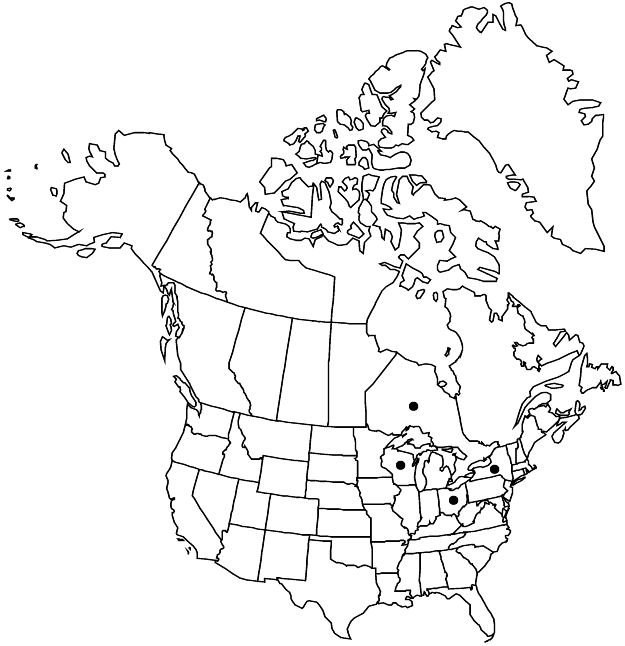Crataegus formosa
Proc. Rochester Acad. Sci. 4: 101. 1903.
Shrubs or trees, 50 dm. Stems: twigs: new growth reddish, 1-year old dark purple-brown, 2-years old gray-tan, older gray; thorns on twigs recurved, 2-years old dark-brown, shiny, older charcoal black, then gray, ± slender, 2.5–5 cm. Leaves: petiole length 30–36% blade, eglandular or slightly glandular; blade deltate (mainly on shoots with terminal inflorescence) to broadly rhombic-elliptic, 4–7 cm, subcoriaceous, base cuneate to nearly truncate, lobes 3 or 4 per side (larger leaves), sinuses moderately deep, lobe apex acute, margins serrate, veins 5 or 6 per side, apex acute, surfaces glabrous. Inflorescences 4–7-flowered; branches glabrous; bracteoles caducous, absent or several, margins glandular. Flowers 22–30 mm diam.; sepals triangular, 6 mm, margins subentire, abaxially glabrous; stamens 20, anthers white, 0.6–0.8 mm; styles 4 or 5. Pomes red, often ± angular, 10 mm diam., ± pruinose; sepals on collar, spreading; pyrenes 4 or 5.
Phenology: Flowering May; fruiting Sep–Oct.
Habitat: Brush
Elevation: 100–300 m
Distribution

Ont., N.Y., Ohio, Wis.
Discussion
Of conservation concern.
The known distribution of Crataegus formosa is very scattered. The species is one of the most beautiful hawthorns, and one specimen set the Crataegus record for flower size with a diameter of 38 mm (E. P. Kruschke 1965). Crataegus porteri Britton [including C. porteri var. caerulescens (Sargent) E. J. Palmer], from Pennsylvania, is similar but with smaller leaves and may be conspecific.
Selected References
None.
Lower Taxa
"thin" is not a number."subentire" is not a number."glandular" is not a number. "eglandular" is not a number."adnate" is not a number."dm" is not declared as a valid unit of measurement for this property.